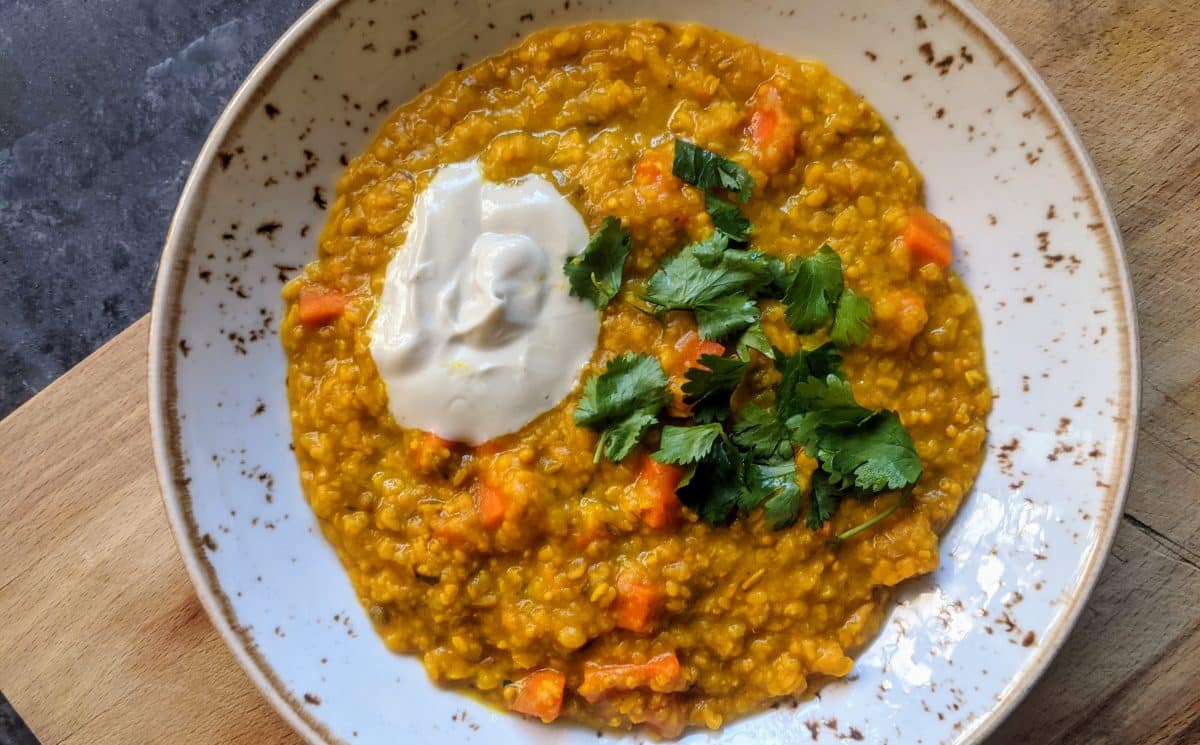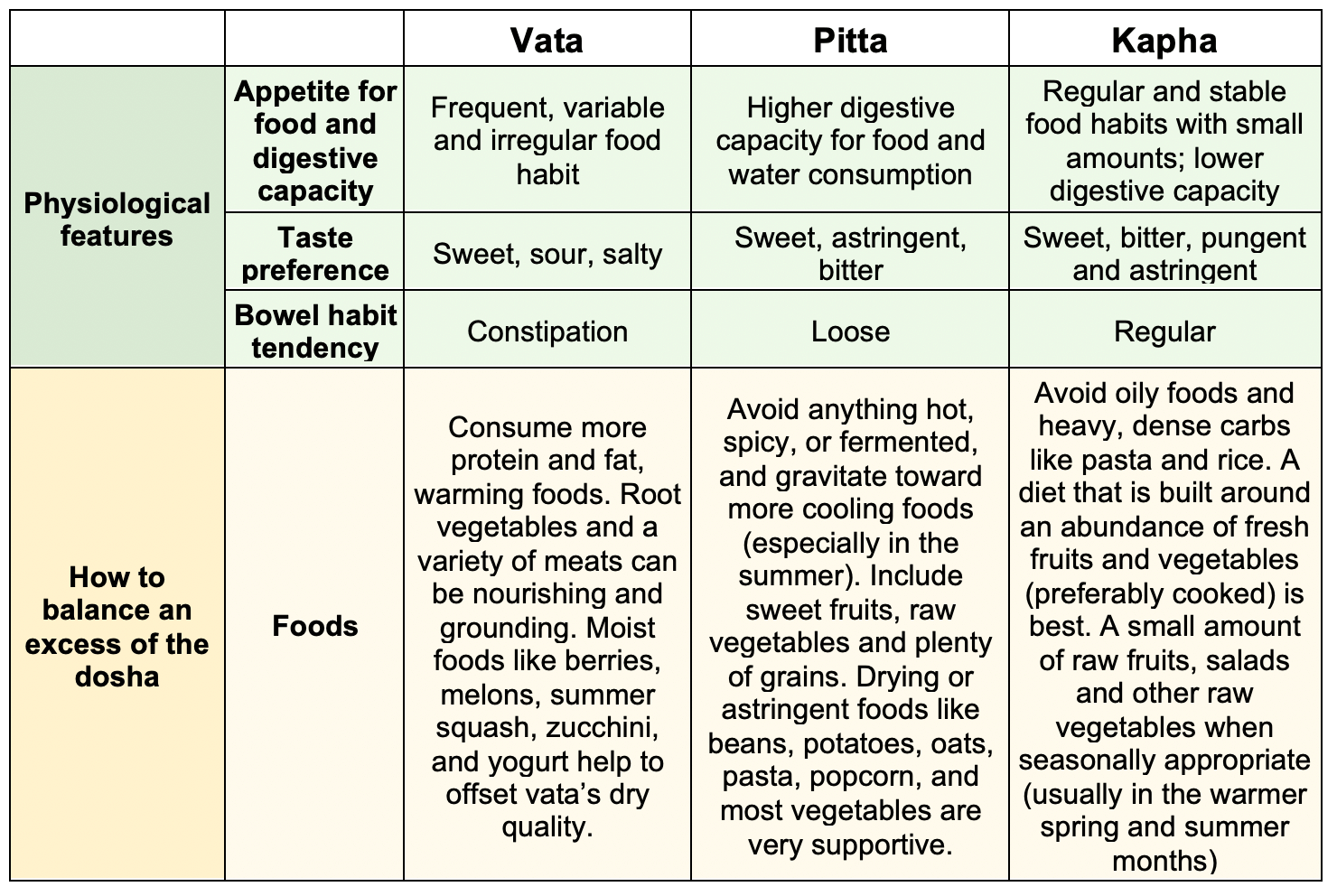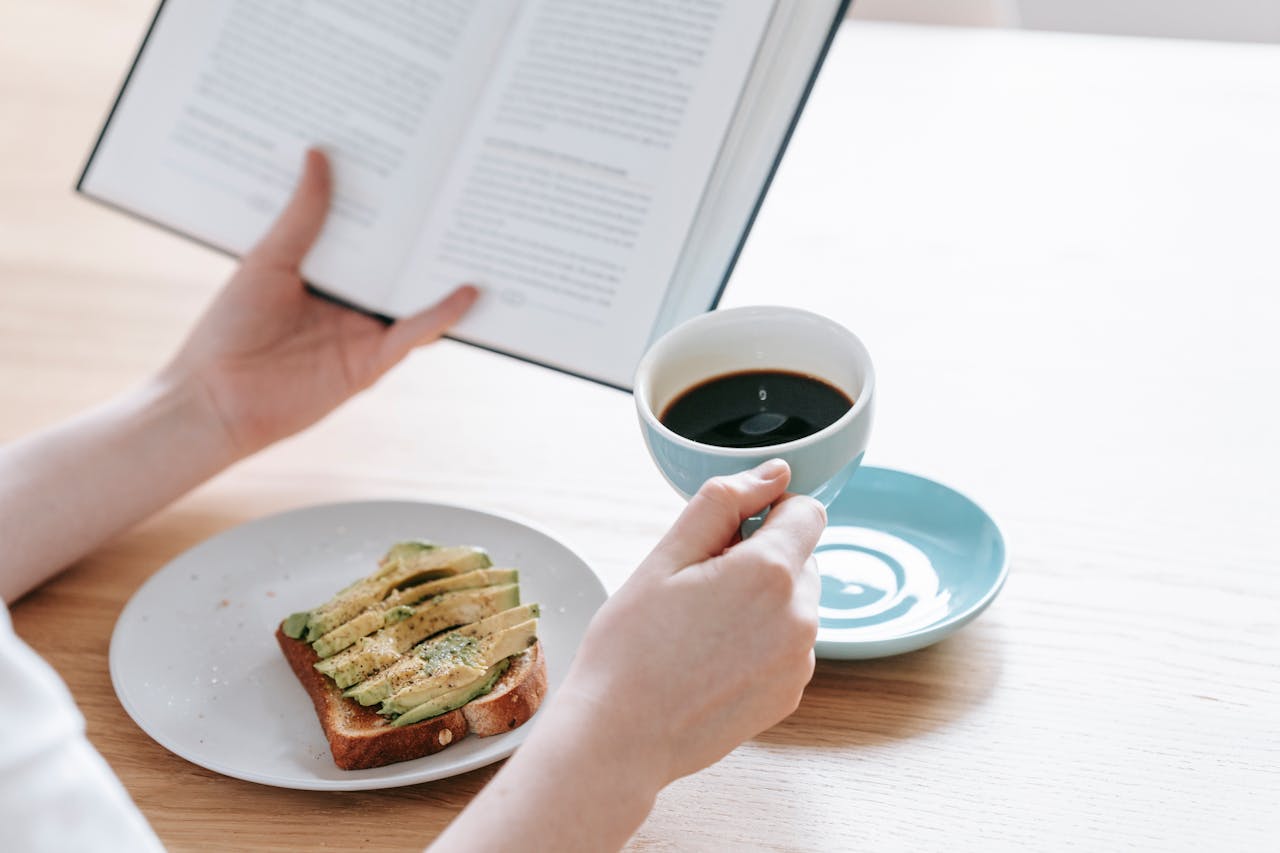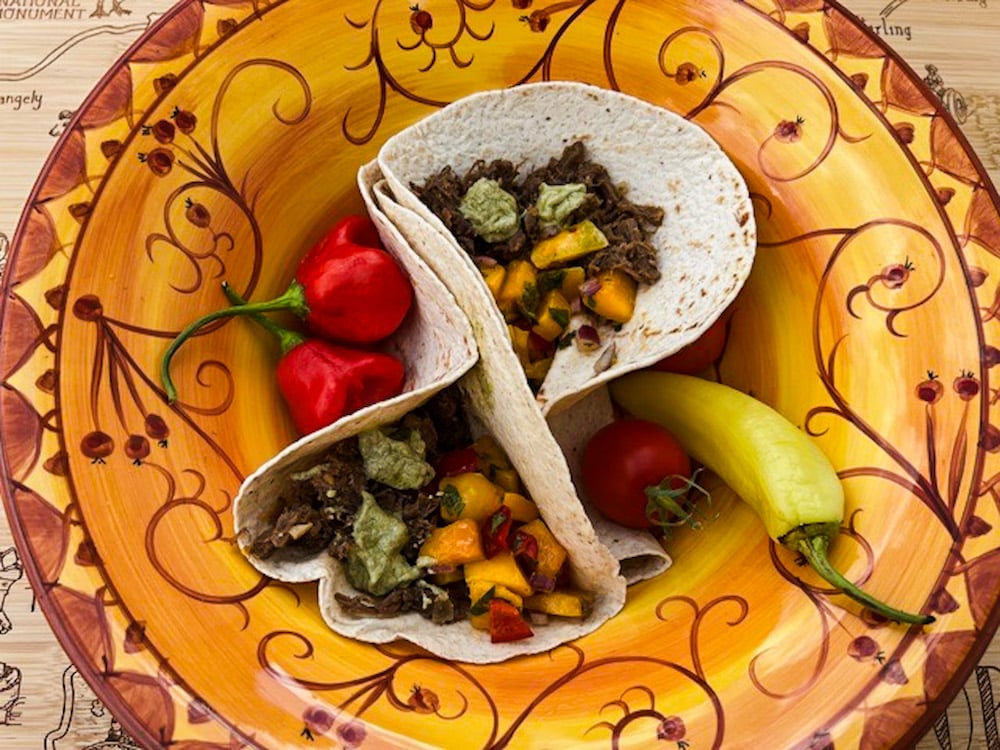
Share this post!
At Nutrition Therapy Institute, we teach students a bioindividualized approach to nutrition. Similarly, Ayurveda, the traditional medical system in India, is focused on the individual. Although NTI does not specifically teach Ayurvedic ideas, it is beneficial to learn about all health modalities to develop a well-rounded understanding of nutrition!
Doshas in Ayurveda
You may have heard the term doshas. Doshas are health types used in Ayurvedic medicine to specify mental and physical tendencies – how certain people should sleep, eat, exercise, as well as what their emotional strengths and weaknesses may be. When the doshas are out of balance in quality or quantity, well-being is adversely affected and various health symptoms can manifest.
In Ayurveda, there are three distinct doshas: vata (air), pitta (fire), and kapha (earth). Each person has a unique balance of all three of these energies. Some people will be predominant in one while others are a mixture of two or more. The doshas can be considered for everything from weight management strategies, to assessing sleep patterns, and even prophylactic protocols for COVID-19! If you want to find out your own Ayurvedic dosha, there are many online quizzes to give you an idea.
Doshas & Digestion
Since we are here with a focus on nutrition and digestion, see the table below for each type’s physiological features related to digestion, and the best foods and drinks to balance out the doshas.

Why we love this Kitchari recipe
Happy January! This is often a time when we crave a reset, have over-indulged, or our digestive system feels sluggish. This particular kitchari recipe is specific for those of a vata body-type or those having a vata imbalance (this can manifest through qualities such as constipation, gas, anxiety, worry, sleep issues, restless thoughts and excessive dryness). The vata-friendly spices help to increase a weak digestive fire while preventing vata digestive issues such as gas, bloating, cramping, and constipation. If you are preparing a meal for a different dosha imbalance, see the modifications at the bottom.
Ingredients:
- 1 cup split yellow mung beans (moong dal)
- ¾ cup white basmati rice
- 2 pieces kombu
- 2 bay leaves
- 10-12 cups water
- 2 tbsp yellow mustard seed
- 2 tbsp coriander seeds
- 2 tbsp turmeric powder
- 2 tbsp ginger, freshly grated
- 1 tbsp cumin seeds
- 1 tsp fennel
- 1 tsp fenugreek seeds
- ½ tsp cinnamon
- ¼ tsp asafetida (hing)
- 1 tsp himalayan pink salt (more to taste)
- 1-2 cups chopped vegetables (optional – best to use root vegetables or green vegetables like carrots, sweet potatoes, turnips, collard greens, kale, spinach, chard, etc.)
For serving: lime wedges, ghee, chopped cilantro, and yogurt (preferably non-dairy or goat)
Instructions:
- Combine the mung beans, rice, kombu, bay leaves and spices in a large pot. Add 10 cups of water to start, or enough to cover the mixture with 3-4 inches of water.
- Bring to a boil, then reduce heat to a simmer. Continue to cook on low for about 2-3 hours.
- If adding root vegetables to the mix, add after 30 minutes of cooking. Add greens towards the end of cooking. Check occasionally and stir to make sure nothing sticks to the bottom of the pot.
- For well very well cooked and soupy kitchari, add more water and continue to cook until desired consistency.
- To serve, place the following into separate bowls – lime wedges, warm ghee, chutney, chopped cilantro and goat yogurt.
Makes 64-72oz (about 8 servings)
Note: this recipe is very flavorful and is heavily spiced. If you prefer a less powerful dish, you can try reducing the spices to half the listed amount.
Variations for Pitta:
- Avoid mustard seeds and ginger
- Increase fennel seeds
Variations for Kapha:
- Increase ginger
- Add ¼ tsp clove powder and cardamom powder
- Omit ghee
Want to learn how to create and prepare recipes like this?
Join our Natural Food Chef Program! Picture yourself in your kitchen surrounded by nothing but organic vegetables, whole grains, top-quality meats, eggs and a range of the more unusual things like pâté, kimchi, kefir and bone broth. If you resonate with the idea of creating delicious meals that are not only healthy but downright regenerative, then join us for our 15-week program!
Daina Rasutis is a current student of NTI’s Nutrition Therapist Master Program. She plans to use her certification to spark a craving for health through movement, sustainable living and, of course, nourishing food. Follow Daina’s cooking creations and lifestyle tips on Instagram: @tabletocrave
Image use permission given by Table to Crave
Share this post!




















